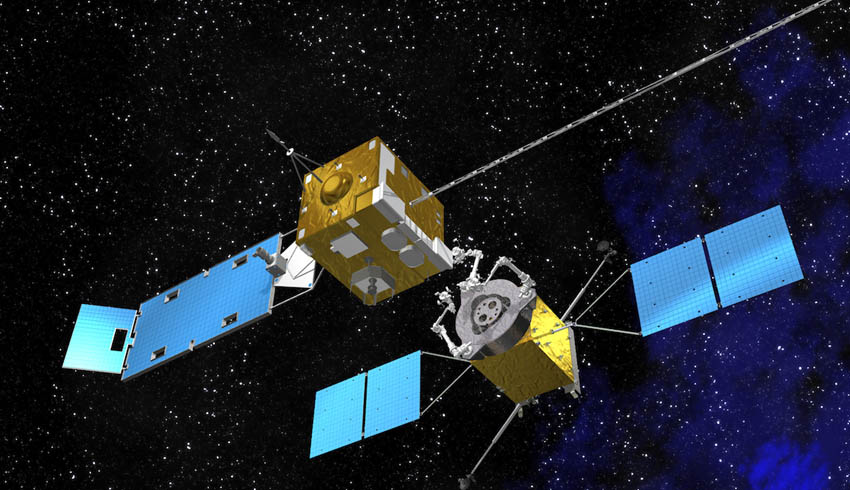
This heralds a new era in space, with MEV-1 pioneering a commercial service to extend the life of expensive satellites that remain fully function but low on the fuel needed for attitude and station keeping.
The plan is for MEV-1 to provide five years more service for Intelsat-901, launched in 2001 and at the end of its fuel supply. Should Intelsat desire, it could extend the contract at the end of five years – otherwise MEV will detach and move on to extend the life of another satellite.
The docking, a critical step considering Intelsat-901 was never designed to link up with another vehicle in space, occurred this week in a graveyard orbit around 300 kilometres out from geostationary orbit.
Intelsat-901 had been moved there as its fuel depleted. The docking involved a careful slow approach that was conducted with complete success.
MEV-1 was launched in October last year aboard a Russian Proton rocket.
The duo will now undergo additional checks before MEV-1 moves the combined stack back to geostationary orbit so Intelsat-901 can resume service. That’s expected late next month.
Intelsat-901 will return to service covering North and South America, Africa and Europe, replacing Intelsat-907, launched in 2003 and now four years past its design life.
“This is the first time in history a docking has ever been performed with a satellite that was not pre-designed with docking in mind, and the first time two commercial satellites have ever docked,” said Joe Anderson, vice president of operations and business development at Northrop Grumman subsidiary SpaceLogistics.
Although Intelsat-901 was never designed for in-orbit hook-ups, that was possible because it and other large satellites possess a couple of common features.
That’s a standard launch adaptor ring by which it was originally attached to the top of the launch rocket and a liquid apogee engine, used to lift the satellite to geo orbit and then not used again.
The cone shaped nozzle of this engine is a perfect target for the MEV’s probe, which extends about a metre out, enters the nozzle throat, extends its fingers to hold on, then retracts to draw the two together.
However, from an abundance of caution, that was performed away from geostationary orbit where any mishap could produce debris that would imperil other satellites.
Intelsat was sufficiently convinced of the viability of the MEV process to contract a second MEV to extend the life of another of its satellites, so far not identified.
That’s currently under construction for launch later this year by Arianespace on an Ariane 5 rocket.
The MEV-1 and Intelsat-901 rendezvous apparently proceeded so smoothly that future rendezvous will be conducted in geostationary orbit. That means the satellite won’t have to temporarily withdraw from service.
Receive the latest developments and updates on Australia’s space industry direct to your inbox. Subscribe today to Space Connect here.











